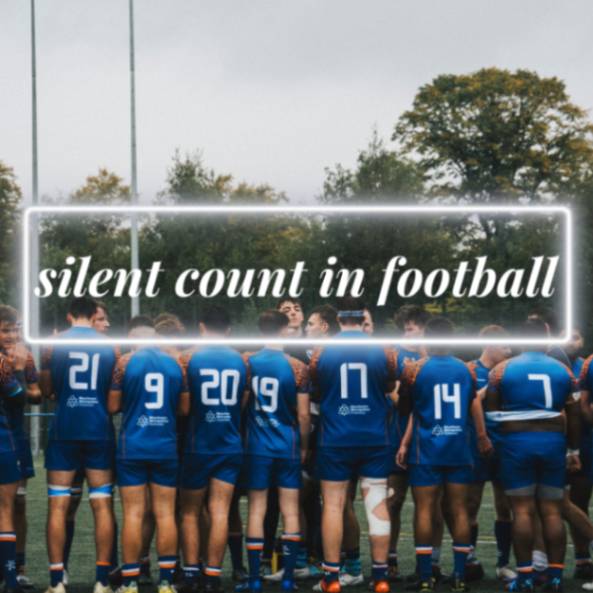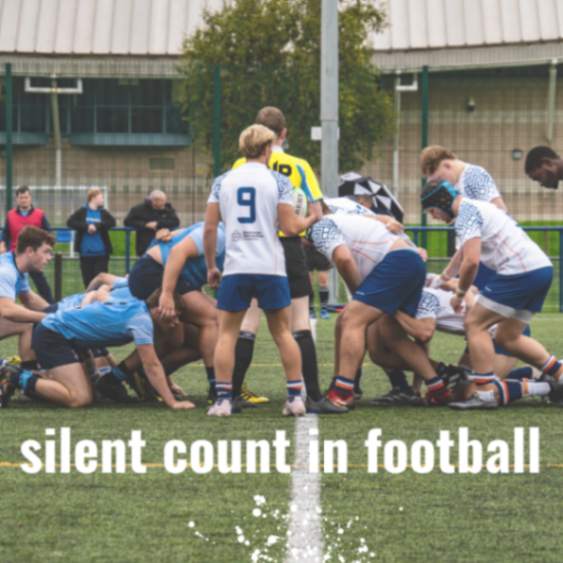
Introduction to Football Strategies: More Than Just Brawn
Football is a sophisticated sport that involves more than just strength and quickness; it’s a chess game performed on a 100-yard field. Coaches spend many hours studying playbooks, and players practice much like developing pitching skills in baseball. However, it’s not just about the running game or the passing attack; there are also lesser strategies that can significantly alter the outcome, akin to understanding pitching distances in baseball. Everything is carefully planned out and constantly practiced, from the formation to the snap count. The main term here is strategy, and each element has a distinct purpose. While the attention is frequently focused on standout quarterbacks or lightning-quick wide receivers, it is frequently the lesser-known strategies that tip the odds in a team’s favor.
Introduction to Silent Counts in Football: The Unsung Hero of the Playbook
So, in football, what exactly is a silent count? Unless you’re a keen football fan, you might not be familiar with this term. But a lot of plays’ success can be attributed to this strategy. The silent count is a tactical response to two significant problems in football: raucous crowd and a watchful defense, similar to how baseball teams use baseball chants to coordinate their plays. Verbal communication is impossible when the audience is yelling. The silent count is utilized in this situation. Without saying a word, the quarterback is giving the rest of the squad a visual cue to start the play. Even in the loudest arenas, the attack is able to perform well because to this ingenious workaround. It’s similar to speaking a code that only your team can decipher, which gives you the element of surprise. So remember this tiny nugget the next time you watch a game. Football’s subtleties can be better understood if you are aware of what a silent count is.
Breaking Down the Basics: What Is a Silent Count in Football?
A seemingly insignificant element frequently means all the difference in the high-stakes details like silent counts can be game-changers. It’s a nonverbal cue in noisy situations, much like how teams use baseball chants for coordination and morale. we’re getting to the meat of the matter: what is a silent count in football? When verbal communication isn’t possible, the silent count is a crucial tool. Imagine that you are performing in front of a boisterous crowd at a stadium. It might be pointless to shout out the snap count. How does the team adjust, then? They employ a quiet count as a nonverbal cue to everyone: “Hey, it’s go-time.”
The Mechanics of a Silent Count in Football: How Does it Work?
Since you’re already asking what is a silent count in football, you might as well understand how it’s performed, right? The silent count isn’t some abstract concept; it’s a well-practiced routine. Instead of the quarterback yelling out “hut, hut,” they use a visual signal. This could be anything from lifting a leg to a simple hand movement. The center, who is responsible for snapping the football, will see this visual cue and know it’s time to snap the ball to the quarterback. Essentially, a silent count is all about replacing verbal cues with visual ones, allowing the play to proceed even in a deafening environment. This strategy is as crucial as knowing which dugout is the home team in baseball, where position and strategy play key roles.
The Need for Silent Counts: Why Is It Important in Football?
We frequently concentrate on the more eye-catching aspects of football, such as touchdown passes or outstanding defensive plays. However, there are situations when more subtle tactics can have a significant impact. The quiet count is one of these methods. So, you might be wondering why a silent count is ever used in football. A silent count is your best friend when you’re dealing with a hostile throng that obliterates all attempt at vocal communication. It acts as a tactic that enables a group to communicate while things are chaotic, much like the coordination required in baseball when determining pitching distances for younger players.
Confusing the Defense: Another Advantage of the Silent Count
Let’s think about how using a silent count affects the defense if you’re still unsure of its benefits in football. A defender can typically predict a play based on the quarterback’s verbal cues. This benefit vanishes during a quiet count. Inability to foresee the precise moment the ball will be snapped leaves the defense in the dark. It’s similar to attempting to capture a fish in a big ocean since you don’t really know where to look. And keeping the defense guessing is a huge win for the offense in a game when milliseconds may make all the difference, akin to the strategic element of hottest 90s hip-hop baseball walk-up songs in creating an energized atmosphere.
Unveiling the Process: How Is a Silent Count in Football Executed?
The execution of a silent count in football is key to understanding what it entails. Knowing it exists is one thing, but how does it function in practice? Football is a game of timing and cooperation. Each participant has a certain role to play in order to effectively complete a silent count. The quarterback is the center of it all. Without disclosing anything to the opposition team, he must start the silent count. Sounds difficult, huh? However, teams have perfected this art through practice. also This requires practice and precision, much like developing skills based on average pitch speed by age in baseball.
The Quarterback’s Role: The Maestro of the Silent Count
When exploring how a silent count in football is executed, it’s impossible to overlook the quarterback. He’s the maestro, orchestrating this delicate operation. Instead of shouting out the usual snap count, he’ll give a pre-determined visual cue. This could be as simple as lifting a leg or as subtle as a nod of the head. This cue is the spark that sets the play in motion, and every player on the offensive line is watching for it like a hawk.
The quarterback, akin to a pitcher in baseball who masters pitching distances, is the maestro of the silent count in football. He orchestrates this delicate operation, giving pre-determined visual cues. Every player on the offensive line watches for these cues like a hawk, ready to react in a coordinated manner. Just as in baseball, where understanding the specific roles and responsibilities of each of the players on a team is crucial, in football, the silent count requires that every player knows their role and acts in unison.
Teamwork Makes the Dream Work: The Role of Other Players
But the quarterback can’t do it alone. The success of executing a silent count in football hinges on the entire team being on the same page. The offensive line and the receivers are equally crucial, just as every player is important in baseball when using team chants for effective coordination. In both sports, teamwork is key, and every player’s contribution is vital, whether it’s in the execution of a silent count in football or understanding the number of players on a baseball team and their specific roles. They have to pick up on the quarterback’s silent cue quickly and react in a coordinated manner. This involves a high level of focus and timing. Miss the cue, and the whole play could fall apart. Nail it, and you’ve got a well-executed play that catches the defense off-guard.
The Many Faces of Silent Counts: Variations in Football Strategies
It’s amazing to see that there isn’t just one “right” way to perform a silent count in football when we look into the concept in more detail. Yes, the fundamental idea—communicating without utilizing your voice—remains the same. Teams, however, have developed a number of strategies to make this work. Different forms of silent counts can be used, depending on the circumstance and what the team feels most comfortable with. Football teams have diverse ways of doing a silent count, much like various musicians each have their own distinctive approaches.
The Head Bob: A Classic Silent Count Technique
Among the popular variations of how a silent count in football is executed, the head bob stands out as a classic. In this technique, the quarterback will nod or bob his head as the cue for snapping the ball. It’s simple and less prone to misunderstanding. However, an overly obvious head bob could tip off the defense, so subtlety is key.
Hand Signals and Foot Movements: Silent Count Alternatives
If you thought a silent count in football was limited to head movements, think again. Some teams prefer using hand signals or even foot movements as their cue for action. These techniques add an extra layer of complexity for the defense to decipher, thus offering a tactical advantage. However, they can also be trickier for the team to execute seamlessly. A late hand signal or a missed foot movement could result in a botched play, so practice is crucial.
Silent Counts in Action: Real-World Examples in Football
It’s crucial to provide instances from actual situations when describing what a silent count in football is. On paper, the idea seems wonderful, but how does it hold up in a situation where everything is on the line? During the 2008 Super Bowl, which featured the New York Giants, a silent count had a huge impact.

The 2008 Super Bowl: A Masterclass in Silent Counts
Let’s go back in time to the Super Bowl in 2008, when the New York Giants and New England Patriots squared off. Verbal communication was really difficult due to the boisterous crowd and the exciting environment. What about the Giants, though? No, they successfully planned their game-winning drive using a quiet count. So keep this high-stakes scenario in mind if you ever find yourself debating the value of a silent count in football. The Giants’ employment of the tactic under such duress is evidence of its usefulness.
Why the Giants’ Use of the Silent Count Was a Game-Changer
That Super Bowl’s boisterous audience could have easily been a barrier for the Giants. But they were able to stay in constant communication by adopting a silent count. Imagine being on the field as a player and being aware that one slip-up could lose you the championship. The silent count was more than simply a cool gimmick in such a frenetic environment; it was a game-changer. It gave the Giants the advantage they needed to win by enabling them to execute plays as if they were in their own backyard.
Conclusion:
We’ve proven that a silent count in football is more than just a footnote in a team’s playbook as we come to a close on this topic. It’s a flexible and important tactic that may alter the game in a variety of ways, from perplexing the defense to taking advantage of noisy situations.
The silent count is intriguing because it frequently goes unnoticed, especially by casual viewers. But make no mistake, this tactic is a mainstay of contemporary football tactics. This tactic is used to keep the defense on its toes whether you’re watching professional football or even collegiate games.
Remember everything you’ve learned here about what a silent count in football is and why it matters before you watch the next big game. Keep an eye out for this strategy to better understand the tactical nuance of this great sport. You’ll notice a richer viewing experience as a result, we promise. You might even dazzle your friends with your intricate knowledge of the game.
FAQs
- Is a silent count effective in high-pressure situations? Absolutely, it can be a game-changer in high-stakes scenarios, especially when the crowd is loud and the defense is attentive.
- Can a silent count backfire? Yes, if not executed well, it can lead to false starts or delays of game, which can be costly.
- Is this technique used only in professional football? Nope, you’ll see this technique used in college and even high school games.
- How do teams practice a silent count? It takes consistent practice and timing exercises to get it right. Players often run drills specifically designed to practice the silent count.
- What’s the history of the silent count in football? Though it’s hard to pin down the exact origins, the silent count has been a part of football for decades. It has evolved over time, adapting to the increasing complexities of the game



